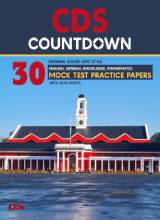All About Strategic Forces Command(SFC)
Hello aspirants,
In this article, we will understand the vital limb of the Indian armed forces the SFC. Most of you haven’t heard the term before; therefore in this post, we will understand some of the essential aspects of the SFC.
So let's begin
-
What is SFC?
- The Strategic Forces Command (SFC), sometimes called Strategic Nuclear Command, forms part of India's Nuclear Command Authority (NCA).
- It is responsible for the management and administration of the country's tactical and strategic nuclear weapons stockpile.
- It was created on January 4, 2003, by the Vajpayee Government. Air Marshal Teja Mohan Asthana became its first commander-in-chief.
- Fighter pilot Air Marshal NS Dhillon recently was appointed the new Strategic Forces Command Chief.
- Why is SFC important?
- It is responsible for operationalising the directives of the NCA under the leadership of a Commander-in-Chief who is a three-star rank officer.
- The chief has the sole responsibility of initiating the process of delivering nuclear weapons and warheads, after acquiring explicit approval from the NCA.
- The exact selection of the target area shall be decided by the SFC through a calibrated, cumulative process involving various levels of decision-making, and with formal approval by the NCA.
- The SFC manages and administers all strategic forces by exercising complete command and control over nuclear assets, and producing all contingency plans as needed to fulfil the required tasks.
- Since its inception, the SFC’s command, control and communication systems have been firmly established, and the command has attained a high state of operational readiness.
- With all these critical responsibilities the SFC is essential for the Indian armed forces.
-
Possessions of SFC?
- By June 1994, India's 333 Missile Group in Secundrabad (in South India) had acquired six Prithvi missiles.
- By 2002 it was reported that between 100 and 120 Prithvi SRMBs had been produced, with India having a production target of 20 Agni 2 IRBMs by the end of 2001.
- It was said that India could build a total of five Agni missiles each year.
- Other reports in 2002 claimed that the production rate of the Agni-2 can be as high as 12-18 missile per year.
- The Army had already deployed two Prithvi missile groups 222 and 333. While it was going ahead with the raising of new missile groups for the longer-range missiles.
- As of 2017, four Prithvi missile groups (222, 333, 444, and 555) were reported to be in service.
- The SFC has submitted a proposal to the Defence Ministry for setting up two dedicated squadrons of fighter aircraft which will act as a mini-Air Force.
- This will be the first time that the SFC, which at present depends on the Indian Air Force for delivering nuclear weapons under its command, will have its own aerial assets.
These were some of the essential points regarding the SFC which every aspirant must be aware of.
Stay connected to DDE for more such article.
Share it to spread information.
JAI HIND






 Order Now on Amazon
Order Now on Amazon
